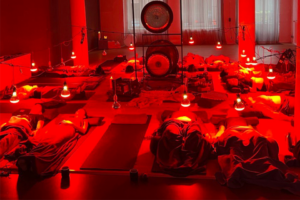Revolutionizing Dermatology: The Power of Red Light Photodynamic Therapy for Actinic Keratoses

Photodynamic therapy (PDT) has emerged as a groundbreaking treatment in dermatology, particularly for patients with actinic keratosis. This article delves into the fascinating world of red light PDT, exploring its benefits, applications, and potential to transform the landscape of skin cancer prevention. Whether you’re a patient seeking treatment options or a healthcare professional looking to expand your knowledge, this comprehensive guide will illuminate the path to clearer, healthier skin.
Table of Contents
What is Photodynamic Therapy and How Does It Work?
Photodynamic therapy (PDT) is an innovative treatment that combines light activation with photosensitizing agents to target and destroy abnormal cells. In dermatology, PDT has gained significant traction for treating various skin conditions, particularly actinic keratoses (AKs).The process involves two main steps:
- Application of a photosensitizing agent: A topical medication, such as aminolevulinic acid (ALA) or its derivatives, is applied to the affected area of skin.
- Light activation: After a specific incubation period, the treated area is exposed to a light source, typically red or blue light, which activates the photosensitizing agent.
When the light activates the photosensitizing agent, it triggers a photochemical reaction that produces reactive oxygen species. These molecules selectively damage the abnormal cells, leading to their destruction while largely sparing healthy surrounding tissue.
The Rise of Red Light in Photodynamic Therapy: A Game-Changer for AK Treatment
Red light photodynamic therapy has emerged as a particularly effective treatment option for actinic keratoses. Here’s why:
- Enhanced penetration: Red light can penetrate deeper into the skin compared to blue light, making it more effective for treating thicker lesions or AKs in areas with thicker skin, such as the scalp.
- Reduced pain: Many patients report less discomfort during red light PDT compared to traditional blue light treatments
- Improved efficacy: Studies have shown that red light PDT can achieve higher clearance rates for AKs, especially when combined with certain photosensitizing agents like Ameluz (aminolevulinic acid hydrochloride)
What Are Actinic Keratoses and Why Are They a Concern?
Actinic keratoses (AKs) are rough, scaly patches of skin that develop due to chronic sun exposure. These lesions are considered precancerous and have the potential to progress to squamous cell carcinoma, a form of skin cancer, if left untreated.Key characteristics of AKs include:
- Typically appear on sun-exposed areas like the face, scalp, ears, and hands
- Can be flesh-colored, pink, or reddish-brown
- Often feel rough or scaly to the touch
- May be easier to feel than see
Early treatment of AKs is crucial to prevent their progression to skin cancer and maintain overall skin health.
How Effective is Red Light PDT for Treating Actinic Keratoses?
Red light photodynamic therapy has shown impressive results in the treatment of actinic keratoses. Clinical trials have demonstrated:
- High clearance rates: Studies have reported clearance rates of up to 91% for AKs treated with red light PDT using Ameluz as the photosensitizing agent.
- Long-lasting results: Many patients experience sustained clearance of AKs for 12 months or more after treatment.
- Improved cosmetic outcomes: PDT not only treats visible lesions but can also address subclinical AKs, leading to overall improvement in skin appearance and texture.

What Are the Advantages of Red Light PDT Over Other AK Treatments?
Red light photodynamic therapy offers several advantages compared to traditional AK treatments:
- Non-invasive: Unlike surgical excision or cryotherapy, PDT doesn’t require cutting or freezing of the skin.
- Large area treatment: PDT can treat multiple lesions or entire fields of sun-damaged skin in a single session.
- Minimal scarring: The selective nature of PDT results in less damage to healthy skin, reducing the risk of scarring.
- Dual action: PDT not only treats visible AKs but also addresses subclinical lesions, potentially preventing future AK development.
- Improved patient comfort: Red light PDT is often associated with less pain and discomfort compared to other treatment modalities.
What Can Patients Expect During a Red Light PDT Treatment Session?
A typical red light PDT treatment session for actinic keratoses involves the following steps:
- Skin preparation: The treatment area is cleansed and any scales or crusts are gently removed.
- Photosensitizer application: A photosensitizing agent, such as Ameluz or 5-aminolevulinic acid, is applied to the affected area.
- Incubation period: The medication is left on the skin for a specific time, usually 1-3 hours, to allow absorption into the abnormal cells.
- Light exposure: The treated area is exposed to red light for a predetermined duration, typically 10-20 minutes.
- Post-treatment care: Patients are advised to protect the treated area from sunlight for 24-48 hours following the procedure.
It’s important to note that patients may experience some redness, swelling, and mild discomfort during and after the treatment, but these side effects are generally well-tolerated and resolve within a few days [[11]].
How Does Red Light PDT Compare to Daylight PDT?
Both red light PDT and daylight PDT are effective treatments for actinic keratoses, but they have some key differences:
| Red Light PDT | Daylight PDT |
|---|---|
| Uses artificial red light source | Uses natural daylight |
| Controlled light exposure | Variable light exposure depending on weather |
| Can be performed year-round | Best performed during warmer months |
| Typically requires one treatment session | May require multiple sessions |
| Often more effective for thicker lesions | Better suited for thin or moderate AKs |
| Can be more painful during treatment | Generally less painful |
While both methods have their merits, red light PDT may be preferred for patients with more severe or numerous AKs, or when consistent treatment conditions are required [[12]].
Are There Any Potential Side Effects or Risks Associated with Red Light PDT?
Like any medical treatment, red light photodynamic therapy can have some side effects. However, these are generally mild and temporary. Potential side effects include:
- Redness and swelling at the treatment site
- Mild burning or stinging sensation during and after treatment
- Temporary darkening or bronzing of the treated skin
- Crusting or scaling of lesions as they heal
- Rare cases of blistering or infection
It’s crucial for patients to follow post-treatment care instructions carefully to minimize the risk of adverse effects and optimize treatment outcomes [[13]].
How Many Red Light PDT Sessions Are Typically Needed for Effective AK Treatment?
The number of red light PDT sessions required can vary depending on the severity and extent of actinic keratoses. In many cases, a single treatment can provide significant improvement. However, some patients may benefit from multiple sessions spaced several weeks apart.A typical treatment protocol might include:
- Initial treatment
- Follow-up evaluation at 3 months
- Additional treatment if needed based on response
Studies have shown that two PDT treatments spaced 1-3 months apart can lead to complete clearance rates of up to 91% for patients with multiple AKs [[14]].
What Role Does Red Light PDT Play in Skin Cancer Prevention?
Red light photodynamic therapy plays a crucial role in skin cancer prevention by effectively treating actinic keratoses, which are considered precancerous lesions. By addressing these abnormal cells before they have a chance to progress to squamous cell carcinoma, PDT helps reduce the risk of skin cancer development.Additionally, PDT offers several preventive benefits:
- Field treatment: PDT can treat both visible and subclinical lesions in an entire area of sun-damaged skin, addressing potential future AKs.
- Skin rejuvenation: The treatment can improve overall skin health and appearance, potentially making it more resilient to future damage.
- Patient awareness: The PDT process often increases patient awareness about sun protection and skin health, encouraging better preventive habits [[15]].
Key Takeaways: The Future of Actinic Keratosis Treatment with Red Light PDT
To summarize the most important points about red light photodynamic therapy for actinic keratoses:
- Red light PDT is a highly effective, non-invasive treatment for AKs
- It offers high clearance rates and long-lasting results
- The treatment can address both visible and subclinical lesions
- Red light PDT is generally well-tolerated with minimal side effects
- It plays a crucial role in skin cancer prevention
- Multiple treatment sessions may be needed for optimal results
- Proper post-treatment care and sun protection are essential for success
As research continues and technology advances, red light photodynamic therapy is poised to become an even more integral part of dermatological care, offering hope for clearer, healthier skin and reduced skin cancer risk for patients worldwide.Learn more about the benefits of red light therapy for skin healthDiscover how red light therapy can boost collagen productionExplore the potential of red light therapy for acne treatment
Red light therapy being applied to facial skin for treatment of various dermatological conditions






